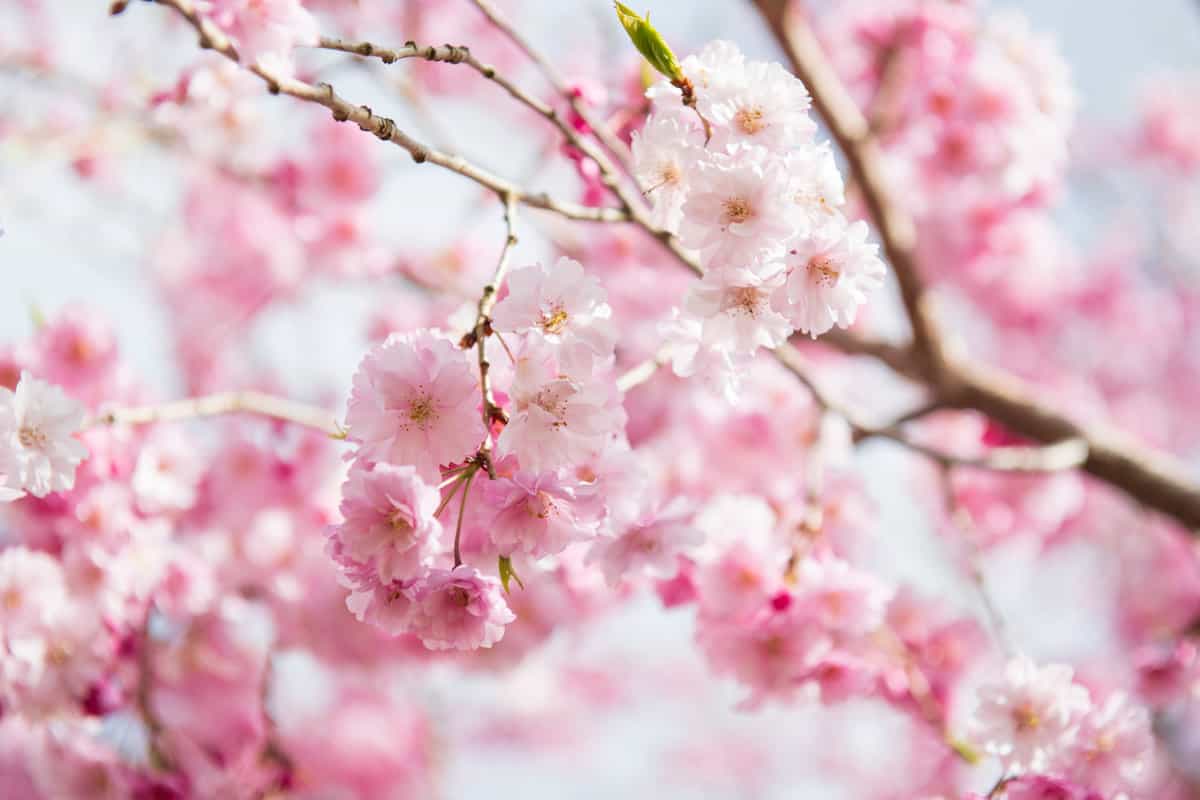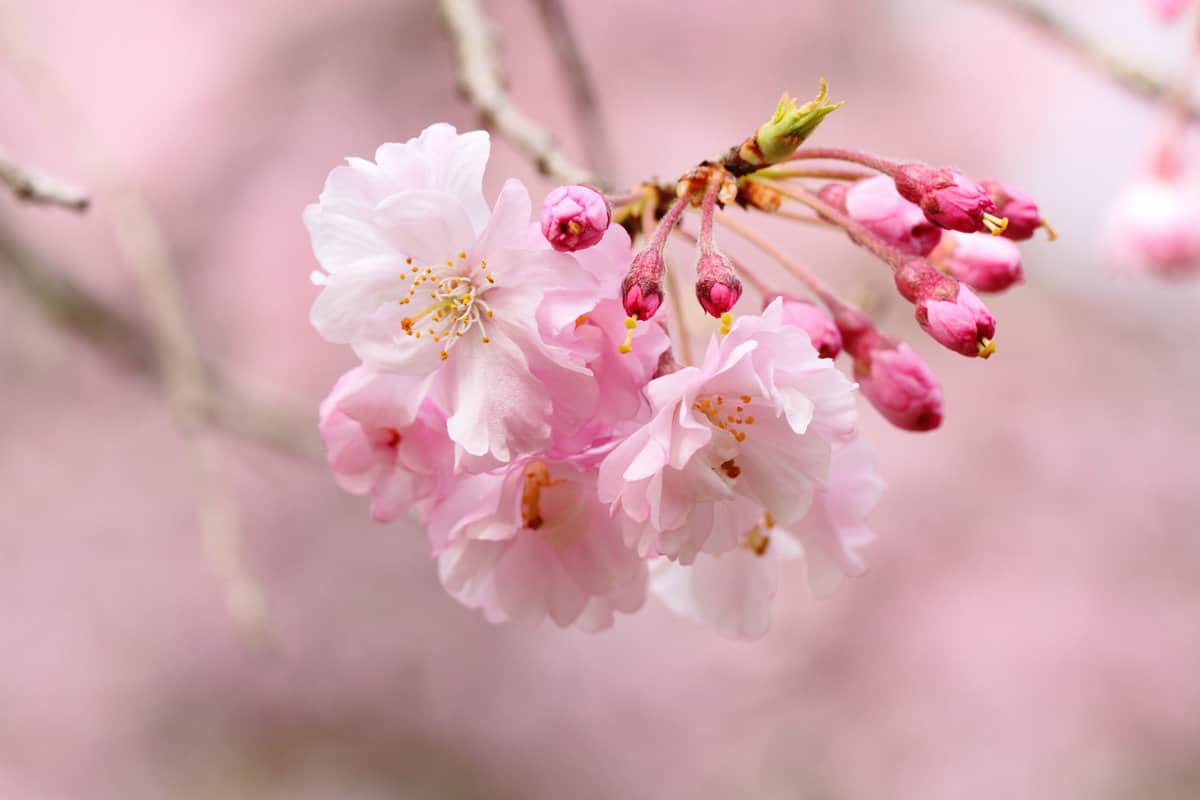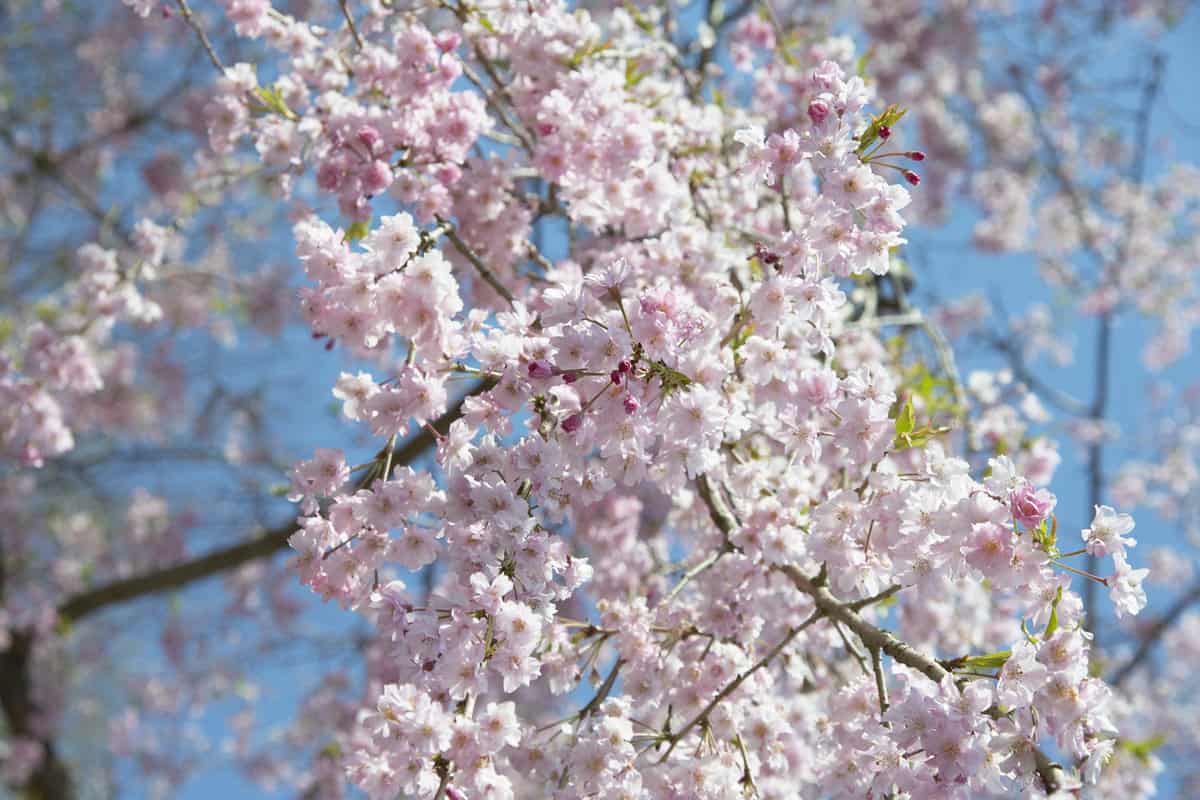Finding new plants to grow in your garden can take doing some research. Are you wondering whether a weeping cherry tree will fit into your landscaping but wonder if it produces fruit? If you're looking for a fruit tree, is the weeping cherry a good option?
We'll answer these questions and many others throughout this article.
Although it may not taste good, many weeping cherry varieties will produce fruit around the same time they bloom. However, many people find the fruit from a weeping cherry inedible, as it tends to be very small and extremely sour.
That said, this can depend on the tree, as some fruits from weeping cherries are used for making jams and preserves. Remember, weeping cherry trees differ from the standard, fruit-bearing varieties.
As we start this post, we will cover all things weeping cherry trees and discuss whether yours will produce fruit. If you're new to planting cherry trees or have other related questions about growing one, we're here to offer some guidance. With that said, let's dive right into this topic below!
![Weeping Cherry tree, Do Weeping Cherry Trees Produce Fruit? [Can You Eat It?]](https://gardentabs.com/wp-content/uploads/2022/11/2.-Do-Weeping-Cherry-Trees-Produce-Fruit-Can-You-Eat-It.jpg)
Will A Weeping Cherry Tree Produce Fruit?

Yes. In most cases, a weeping cherry tree should produce tiny, sour fruit around the same time it blooms. You can sometimes use this fruit for jams and preservatives, although it isn't always edible.
Weeping cherry trees typically produce small black berries, which aren't the same as a standard cherry tree. Many gardeners plant them thinking they'll get the same sweet cherries, but unfortunately, this is not the case.
Therefore, we don't recommend planting a weeping cherry variety if you want fruit you can eat, as this seems to be hit or miss. Instead, you might want to shift your focus towards a 'Sunburst' or even 'Coral' variety.
Additionally, weeping cherry trees are self-fertile but produce more fruit if there is more than one tree. So, to improve the fruit yield on a weeping cherry tree, you could plant a few more nearby.
Again, this comes down to your needs and plan for the cherry fruit.
Can You Eat The Fruit From A Weeping Cherry Tree?
Yes and no. As we mentioned above, weeping cherry trees sometimes produce inedible fruit, although this depends on the variety and conditions.
According to some gardeners, they can turn their small, bitter cherries into jam or preserve, while others say trying this is pointless. So, it's more of a mixed bag regarding people's feedback.
According to The Whole Portion, the cherries from your tree might even be poisonous to animals, so that's another thing to keep in mind before planting this species.
The cherries won't be poisonous for humans but could upset your stomach because of how bitter they are. So, if you're looking to bake a cherry pie using the fruit from a weeping variety: don't.
Are Weeping Cherry Tree Blossoms Edible?

Even though the blossoms from a weeping cherry tree are beautiful, that doesn't always mean you should try and eat them. Generally, these blossoms will cause plant poisoning symptoms if ingested.
Therefore, we do not suggest tasting or cooking with your tree's blooms, as this can make you ill. In addition, the blossoms from a weeping cherry will have extremely glossy leaves, which won't taste or feel good if you eat them.
This is another misconception about this species since regular cherry tree blossoms are safe to eat. So, a common theme here is that weeping cherries are more for decoration than harvesting and eating.
Furthermore, you can still use the branches and flowers from your tree to create centerpieces for your home or flowering bouquets, so they're not entirely untouchable.
Which Type Of Cherry Tree Is Best For Fruit?
There are a few to focus on when it comes to the best types of fruiting cherry trees. These include:
- Celeste Cherry Trees
- Sylvia Cherry Trees
- Lapins Cherry Trees
- Summer Sun Cherry Trees
- Stella Cherry Trees
- Sunburst Cherry Trees
Of this group, Sunburst cherry varieties are a favorite among gardeners and bakers, as they're big, sweet, and bright-colored.
Again, any of these cherry trees will produce delicious fruit throughout the spring, so don't get caught up on finding a Sunburst only.
As you can see, weeping cherry trees are not featured on the best fruit list because they are such a hit-or-miss. Growing fruit from scratch can be very fulfilling as long as the species you choose can produce edible, usable cherries.
Do All Cherry Trees Produce Fruit?
Even though every cherry tree will bloom, not every variety can produce fruit. Generally, most cherry species produce some fruit, even if it's small and inedible.
However, the old varieties, such as 'Bing,' 'Lambert,' and 'Napoleon,' are not self-fruitful, meaning they need another tree nearby to create and produce cherries.
On top of that, 'Kwanzan' cherry trees don't produce fruit, but instead, gorgeous pink, showy flowers, so that's more of a decorative option. Moreover, any cherry tree can fail to produce fruit if it doesn't have the right growing conditions.
So, even if you plant a fruit-bearing variety, your tree could run into problems producing cherries if it becomes sick or the weather/climate is poor.
Cherry trees, although pretty easy to grow, can be temperamental.
Where Can I Grow A Weeping Cherry Tree?

For those wanting to grow a weeping cherry tree, you want to stick between USDA zones 4-9. However, many weeping cherries, including the pink variety, prefer zones 5-8.
In addition, some of the best states for growing weeping cherries are southern Florida, Texas, and California. As we said, cherry trees can develop problems fruiting if they aren't in the right climate.
Therefore, you don't want to grow a cherry tree somewhere outside of their recommended USDA zones.
Typically, weeping cherry trees enjoy a bit of cooler weather, followed by a moderate spring and summer. This tree species don't do well in super hot climates, so your tree may not be successful if you're in the high desert.
With that said, if you are growing sweet cherries (like one of our earlier examples), you can plant them in Washington, Oregon, and California.
So, California seems to be the happy medium between weeping cherry trees and their sweeter counterparts.
Do Weeping Cherry Trees Get Big?
Generally, a standard weeping cherry variety will grow to 20-25 feet upon maturity. However, this can be slightly different by type, so not all weeping trees are the same.
Specifically, let's cover how big the most common weeping cherry trees will get:
- White Weeping Cherry: 8-15 feet tall, 6-12 feet wide
- Cheal's Weeping Cherry: 10-15 feet tall, 10-15 wide
- Weeping Higan: 15-20 feet tall, 15-20 feet wide
So, the weeping Higan variety tends to become the largest of these common weeping cherry trees. Regardless, you want to give a weeping cherry tree plenty of room so that it can sprawl and bloom accordingly.
On top of that, a dwarf weeping cherry tree will be smaller than regular options, often topping out around 10 to 15 feet tall and wide. So, every tree will be unique.
How Long Does It Take A Weeping Cherry Tree To Bloom?
Most times, you will see your weeping cherry tree bloom between its first and third years. Of course, this can significantly depend on where your tree is, how much sun it receives, and whether it's healthy or not.
Many ornamental cherry trees tend to produce flowers fast, as this is what they're intended for. However, fruiting cherry trees can be slower to bloom and fruit, so that is something to remember.
According to experts, the weeping cherry tree is one of the first within this species to bloom in the spring. Since this variety can be planted throughout the year, it's possible to see flowering after its first year in the soil.
Furthermore, it can take upwards of five to seven years for a cherry tree to reach its total blooming capacity. Therefore, your tree may flower years 1-3 a little, but you won't see breathtaking amounts until later.
How Long Before A Weeping Cherry Matures?

Even though this can vary, a weeping cherry tree should reach full maturity within ten or so years. As we covered above, weeping cherries range in height, width, and overall size, so your tree might take longer to get there.
For example, if you have a weeping Yoshino cherry tree, it's possible for it to reach half of its expected 20-30 feet within the first decade you plant it.
Again, this can depend on the climate and your care routine, so every cherry tree is different. On top of that, smaller cherry trees typically reach their full size before larger cultivars.
As we mentioned before, a weeping cherry tree may also take a year or so to bloom and then around 4-7 to bear fruit, so try to have patience with your tree.
Fertilizing cherry trees can help speed up this process, although you don't want to overdo it.
To Finish Things Up
Whether you want to plant a weeping cherry tree or haven't thought of this variety, it's always good to know whether it can produce fruit. From what we found, you can expect a weeping cherry tree to bear small, sour cherries, although they aren't always edible.
Generally, this cherry tree variety is better for its blooms and aesthetic appeal rather than for producing delicious, edible cherries. However, some gardeners can make jams or preserves with their weeping cherries, so this isn't impossible.
Regardless, give your tree time to mature and bloom, as it will take a few years to reach its full flowering and fruit-producing potential.
Made it to the end? Check out these helpful related garden articles below!
When To Plant Cherry Trees By Zone [And Tips For Best Growth]
Are Cherry Trees Messy? [Deciding If You Should Plant One In Your Yard]
